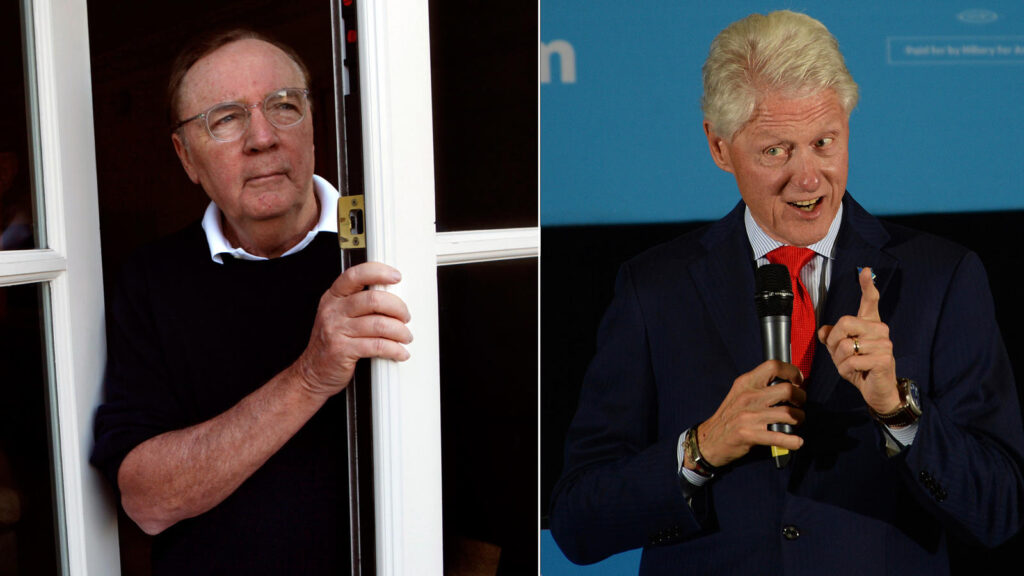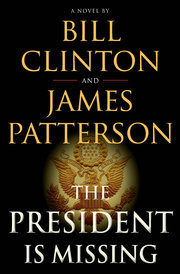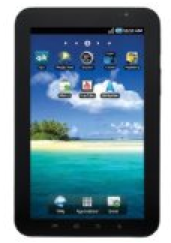


Author James Patterson, former President Clinton (Genaro Molina / Los Angeles Times; Diedre Laird / Charlotte Observer)
Have you heard…former President Bill Clinton and iconic author James Patterson have teamed up to write a novel, The President is Missing, that will be published June 2018.
Alfred A. Knopf and Little, Brown and Company will jointly publish the novel, which represents a rare foray into fiction for a former president, according to the report published in The New York Times.
You can read the rest of the story in the Times here.

By Eileen Batson, owner and founder of Batson Group Marketing and Public Relations
While there are a variety of reasons to write an eBook, here are six that are proven winners.
EILEEN BATSON has been a publicist and owner of Batson Group Marketing and PR for 25+ years.
She offers consultation and implementation services for business owners, authors and artists to help them be well known, well thought of and well-remembered.
For more information contact Eileen at Eileen@BGMPR.com or visit her website at www.BGMPR.com

It’s nice to say you are a green company, but doing it effectively is another story.
With digital printing we don’t have thousands of books sitting in warehouses waiting to be sold – spent resources that may or may not be purchased and read.
We print books only when an order is received.
The majority of our book sales (85%) are electronic as manufacturers of ereaders have opened their walled gardens allowing their books to be read on any device, any platform, anywhere, anytime.
Think printed books will go away? No way. Did movie theaters close when home theater systems became mainstream?
The Association of American Publishers reported that the annual growth rate for eBook sales fell during 2012, to about 34% – a sharp decline from the triple-digit growth of the preceding four years.
But that doesn’t mean ebooks are going away. A recent Pew Research Center survey showed that adults who have read an e-book increased from 16% to 23% in the past year. It also revealed that 89% of regular book readers said that they had read at least one printed book in the last year.
Ebooks are merely another channel, another technology to promote, sell and enjoy books. It compliments printed books. Printed books won’t go away – there will just be fewer printed.
Fewer printed books is not good for the big six publishers, but it won’t bankrupt them – just lower their sales volume and profit margins.
That’s why they won’t fully embrace ebooks and why they charge artificially high prices for their ebooks close to the full price of their printed books.
They want to revive the same high profit margins they enjoyed with print books for so many decades.
But they will never convince their customers or the general public that ebooks cost as much as print books to edit, process and distribute.
Ebooks are a disruptive technology and like all disruptive technologies is condemned, rejected and deemed catastrophic for society by those who stand to lose.
The market will determine the accepted price of ebooks, not the publishers and there is nothing they can do to stop it. The tsunami has already hit land.
“I was completely surprized…especially to know only now how this quiet person had gone against all odds, exposed himself to so much danger and took the risk to do something that he believed in and acted upon to bring resolve. I must say that with all that he was going through, he did not show it.” – Heidi Efteckhar Silver, a character in the novel, The Man Who Fooled SAVAK.
 Doug Roberts exciting novel, The Man Who Fooled SAVAK, came into being with the help of his long-time friend and co-worker, Heidi Efteckhar Silver, who helped him remember a lot of the details of his daring escape from Iran forty years ago. Mrs. Silver, one of the major characters in the book, played an integral part in helping Doug smuggle his then fiance and her mother out of Iran when the secret police, SAVAK, would not allow them to leave. SAVAK watched the family closely because they wanted the family to lead them to the husband and father, who was a human rights activist and lawyer who had escaped a decade earlier. Here is Mrs. Silver’s thoughts on The Man Who Fooled SAVAK.
Doug Roberts exciting novel, The Man Who Fooled SAVAK, came into being with the help of his long-time friend and co-worker, Heidi Efteckhar Silver, who helped him remember a lot of the details of his daring escape from Iran forty years ago. Mrs. Silver, one of the major characters in the book, played an integral part in helping Doug smuggle his then fiance and her mother out of Iran when the secret police, SAVAK, would not allow them to leave. SAVAK watched the family closely because they wanted the family to lead them to the husband and father, who was a human rights activist and lawyer who had escaped a decade earlier. Here is Mrs. Silver’s thoughts on The Man Who Fooled SAVAK.
Q. Not many novels use the names of real people but Doug Roberts in his book The Man Who Fooled SAVAK, portrays you as being a friend and co-worker in the Administrative Services office in the U.S. military advisory unit to Iran, ARMISH/MAAG. I find that rather remarkable.
A. Since Doug’s story is based on a real life experience, it’s great that he has used people’s real names in his story. Most things mentioned in his book did happen. Technology, such as Facebook, also played a big role in Doug being able to find some of the people he had worked with in ARMISH/MAAG, such as myself, and hear more stories from them that made his book more authentic and I am glad I was part of it.
Q. Did you know why Doug was sent to Administrative Services before leaving Iran?
A. I had absolutely no idea. I must say that Captain Seaman and Del, with whom I worked closely had great respect for Doug and kept his ordeal, which was extremely serious, strictly confidential.
Q. What was it like working with Doug.
A. I found him to be a pleasant fellow, who was very easy to work and get along with. I was completely surprised when I read “The Man Who Fooled Savak,” especially to know only now how this quiet person had gone against all odds, exposed himself to so much danger and took the risk to do something that he believed in and acted upon to bring resolve. I must say that with all that he was going through, he did not show it. He exercised great care in keeping the situation under wrap. This also speaks of Doug’s strong and determined character which is well played out in the book.
Q. What did you think of the book.
A. I thought the book was amazing. When I was reading the book, events played out in front of my eyes. His description of the culture, food, the Iranian way of life and their hospitality is so authentic that it also took my life for a review during those years in Iran. The amazing thing about this book is that Doug, as an American GI, who was stationed in Iran for a brief period of time witnessed the signs of the revolution which came about only a few years later.
Q. Would you recommend this book to your friends.
A. Absolutely. Especially young adults. My own children, who are now young adults, were very small at the time and knew nothing when we had the Iranian Revolution in 1979. This book is not only intriguing and entertaining, but also has a great historical value. During the 2009 uprising, I found myself explaining to my boys, their friends and even some of my friends how all this had come about. Doug has done a great justice in describing what was going on in Iran during the Shah’s reign which lasted nearly 37 years before he was overthrown during the 1979 Revolution. I think those who read this book today will not only be intrigued by the story, but will also learn about Iran and gain great respect for this ancient country, with rich culture and history whose people are kind, friendly and hospitable, but have suffered much in the hands of politics.
__________________________________________
The Man Who Fooled SAVAK, a suspenseful romance, is available on the Kindle, the NOOK and in other ebook formats from Smashwords.com.
Electronic Edition
eIBSN 978-1-4524-4281-5
435 Pages
Published June 2011
With all the buzz around the iPad, you don’t need to be psychic to predict that Amazon would sooner or later develop a comparable color screen tablet device.

Well the sooner is here. Amazon is now accepting iPads and other devices as trade-ins for their new touch-screen color tablet at http://amzn.to/jbdaq2
Steve Windwalker reported in the blog Kindle Nation Daily that Amazon is well on the way to preparing to launch the device sometime this summer. Here’s what he wrote about the trade-in program.
“It extended its relatively unknown Buyback program, previously associated mostly with textbooks, movies, and video games, to include a wide range of electronics products including the iPad, the iPhone, the Samsung Galaxy, the Motorola Xoom, and all kinds of other devices that might — if you could trade them in for a decent sum — prepare the way for you to buy a Kindle tablet, both in terms of the need to replace functionality and the financial wherewithal to make the purchase.”
They actually want you to own their new Kindle Color version knowing full well that owners of iPads and other color tablet like devices wouldn’t buy the new Kindle after shelling out $500+ for their current iPad or similar device.
It’s another marketing first for Amazon to grab the lion’s share of the spawning tablet market, and I’m sure it won’t be their last.
You can also read Amazon’s press release about the trade-in program on Steve’s post on Kindle Nation Daily.
Congrats to Amanda Hocking for using a traditional publisher to further her writing career. She did the right thing seeking out a traditional publisher and the reason is clear – she wants to be a writer – not a book marketer, editor, designer and distributor.
 This is not a new trend – it has been happening for years.
This is not a new trend – it has been happening for years.
The caveat here is her content. She has the content that sells – when she writes, it sells. She can afford to give away a large piece of her royalties so she can spend more time writing.
So should every self-published author seek out traditional publishers for their work. Maybe, yes and maybe, no. Some authors like JA Konrath took the reverse course – he went from traditional publishers to self-publishing because he could get a bigger piece of the publishing pie, especially on his traditionally-published books that went out of print. Even luminary Stephen King experimented with self-publishing a few years back.
A new trend is emerging as traditional publishers go digital. Currently, a self-published author could get their work in front of more people as an eBook than a printed book. This is still true, but as more and more traditional publishers go digital, they can offer both – significant eBook exposure as well as print book distribution. They will take a larger piece of the pie, but if your work is selling well, it is worth going with a traditional publisher.
Here’s the Amanda Hocking story from The New York Times.
If any writer proved that modern self-publishing could be a pretty sweet deal, it was Amanda Hocking.
Amanda Hocking, who has self-published nine books.
In the past year Ms. Hocking, a 26-year-old from Minnesota, became an indie heroine in the literary world for publishing nine books that sold a total of more than one million copies, nearly all of them in e-book form, earning almost $2 million for her efforts.
But for Ms. Hocking, self-publishing has had its limits. On Thursday she announced that she had sold a four-book series to St. Martin’s Press, ending a frenzied weeklong auction that involved nearly every major publisher in the business, including Random House, Simon & Schuster and HarperCollins.
St. Martin’s, part of Macmillan, paid more than $2 million for the world English rights to the “Watersong” series, Ms. Hocking’s latest books in the young-adult paranormal genre. >more
We just received this newsletter from a new site called kindlelendingclub.com launched by Amazon last December.
If you have a Kindle or any of the Kindle reading apps (Kindle for PC, Kindle for iPhone, Kindle for Blackberry, etc.) you can go to the site, sign up and borrow any Kindle book that has lending enabled.
The book will then be loaned to you for 14 days and then automatically transferred back to the original owner.
What we found interesting is the lending trends reported by the site in the following newsletter and the 25 most wanted books.
In light of the demographics (females between 35 and 55) we would have thought romance novels would be the leading lending genre. However, here’s what they reported.
The 25 Most Wanted
Literary fiction, the paranormal, sci fi, crime fiction, thrillers and even a memoir about a comedian’s one-night stands; it seems like KindleLendingClub.com readers (who tend to be female and between 35 and 55 years of age) are borrowing anything but traditional romance in the lead up to Valentine’s Day 2011.
While Amanda Hocking’s vampire and paranormal romances for young adults remain perennially popular, only two of th e top 25 most requested books are traditional romance novels: A Season to be Sinful, by Jo Goodman, and Terry Spear’s An Accidental Highland Hero.
e top 25 most requested books are traditional romance novels: A Season to be Sinful, by Jo Goodman, and Terry Spear’s An Accidental Highland Hero.
(Another interesting trend we saw last week as well? Eight of the 25 titles fall under the umbrella of young adult fiction.)
KindleLendingClub.com Most Wanted – Week of January 30, 2011:
1. The Hangman’s Daughter, by Oliver Pötzsch
2. Water for Elephants: A Novel, by Sara Gruen
3. The Hunger Games, by Suzanne Collins
4. Switched (Trylle Trilogy, #1), by Amanda Hocking
5. Wicked Appetite, by Janet Evanovich
6. Mockingjay (The Final Book of The Hunger Games), by Suzanne Collins
7. Catching Fire (The Second Book of the Hunger Games), by Suzanne Collins
8. Heart of the Matter, by Emily Giffin
9. My Horizontal Life, by Chelsea Handler
10. My Blood Approves, by Amanda Hocking
11. The Lover’s Dictionary: A Novel, by David Levithan
12. Freedom: A Novel (Oprah’s Book Club), by Jonathan Franzen
13. The Templar Concordat, by Terrence O’Brien
14. Ender’s Game, by Orson Scott Card
15. We Interrupt This Date, by L.C. Evans
16. A Season To Be Sinful, by Jo Goodman
17. Sizzling Sixteen, by Janet Evanovich
18. Favorite, by Karen McQuestion
19. The Boy Who Came Back from Heaven, by Kevin Malarkey
20. Ascend (Trylle Trilogy, #3), by Amanda Hocking
21. Ender in Exile, by Orson Scott Card
22. Crossing Oceans, by Gina Holmes
23. Shiver, by Maggie Stiefvater
24. Firefly Lane, by Kristin Hannah
25. The Accidental Highland Hero, by Terry Spear
As more and more authors turn to self-publishing, a new trend is emerging that may benefit publishers as well as authors.

Successful crime novelist Joe Konrath is probably the author who started this new trend and is the poster child of successful authors moving into the self-publishing realm.
According to an article in The Star-Telegram online written by Alex Pham of The Los Angeles Times,
“Joe Konrath can’t wait for his books to go out of print.
When that happens, the 40-year-old crime novelist plans to reclaim the copyrights from his publisher, Hyperion Books, and self-publish them on Amazon.com, Apple’s iBooks and other online outlets. That way he’ll be able to collect 70 percent of the sale price, compared with the 6 to 18 percent he receives from Hyperion.
As for future novels, Konrath plans to self-publish all of them in digital form without having to leave his house in Schaumburg, Ill.
‘I doubt I’ll ever have another traditional print deal,’ said the author of Whiskey Sour, Bloody Mary and other titles. ‘I can earn more money on my own.'”
Mr. Pham goes on to write, “It’s difficult to gauge just how many authors are dumping their publishing houses to self-publish online, though for now, the overall share remains small. But hardly a month goes by without a well-known writer taking the leap or declaring an intention to do so.”
However, Mr. Konrath is one of the exceptions to successful self-publishing because his fan base was primarily created by the marketing and distribution efforts of traditional publishing houses.
Does that mean an author needs to be published by a traditional publishing house to be successful later in self-publishing?
Not at all.

Mr. Konrath just stood up on his surf board and is about to catch one of the largest new waves in publishing. He knows where his readers are and how to read them – online where most hang out.
As an aspiring or first-book author who is relatively unknown, you need to market your work to where people seek, read, recommend and review books – in social media: Facebook, Twitter, NING, Linkedin, Foursquare, Goodreads, and all the other social networking sites out there.
There is only one problem. By the time you learn how to effectively market your work on all the social media, you may be in an old-age home especially if you are not so computer savvy. Besides, when would you have time to write another book?
Most authors just want to write. They don’t want to wear six or seven hats and be the marketing guru, the sales superstar or the promotional genius.
This is where publishers can get their own surf board and ride the same wave as Mr. Konrath. But some are just standing up on their boards, others are knelling and most don’t even see the social media wave.
Publishers can offer social networking services, electronic distribution and all the perks of traditional publishing to authors in digital and electronic form. This is a wave that is coming whether publishers like it or not so the best strategy is to make sure to have a surf board and to look out over the horizon. This publisher is certainly standing on his surf board poised to ride the next giant wave.
I am not surprised that Google will launch it’s own electronic book venture called Google Editions. After all, why were they scanning every book ever published into digital form?
The Wall Street Journal and numerous other major publications, blogs and websites reported that Google is now nearing the launch of its massive new ebook venture and they hope to launch this year.
Instead of building another boat to navigate the ebook waters, they are diving into the water and going with the flow. Google says its books will not be tied to one particular device like a Kindle or iPad, but their books will be accessible from any device with an Internet connection.
Google is not running against the current trying to sell their own reading device with its own ebook store. Instead, they are the current ready to sell books to any device, in any format as long as those devices have a connection to the Internet.
And they won’t have just one web site where you have to go to buy their books, they will have unlimited websites paying commissions to anyone who directs traffic to a Google Editions book using the same model as their Google ads.
And some observers think they may have a competitive advantage over the other Titans in the electronic book publishing market.
It will be interesting to see which Titan comes out on top: Amazon, Apple or Google.
Take a look at the video for more – Rex Crum talks with Amir Efrati of the Wall Street Journal about what Google’s entry means for the online book market.
by Manisha on November 12, 2010
Market research firm Forrester has estimated e-book sales to touch the 1 billion mark by end 2010 in US and to triple by 2015!
Although only 7% of the 4000 people surveyed by Forrester actually read e-books these few are probably the most important ones reading 41% of their books in the digital form and buying books by the heaps.
In what might be viewed as a pat on the back for Kindle, it has surfaced as the most popular e-reader (32%), followed by Apple iPhone, Sony e-reader and Dell notebook and finishing a close second to the ubiquitous laptop in the Forrester findings.
Doing 66% of their reading in the digital form, Kindle users have emerged as the most avid e-book patriots and as if on a cue Kindle
has already announced the flipping of its revenue sharing agreement with its publishers which we covered right here for you.
The findings could be a wake-up call for the tentative publisher yet to decide on whether to go digital with his next publication-the writing seems clear on the wall though-and before paperback becomes old hat it’s time to cash in on the promising prospect of e-books as unveiled by Forrester.
If you liked this article, share it on FACEBOOK.